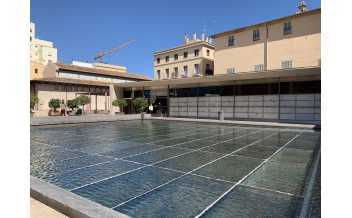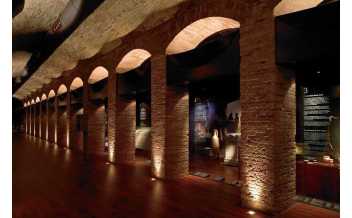On the eastern coast, Valencia is the third biggest city in Spain. With its magnificent monuments, futuristic architecture, great history and picturesque old town, it also has wide bustling beaches and unforgettable parties.
The city's architecture is delightfully rich, with churches, museums, towers and historic buildings that range from Gothic to ultramodern. The City of Arts and Sciences, one of Santiago Calatrava’s signature works, has become a symbol of the city.
Valencia also has natural beauty aplenty: the Turia Garden, on the former riverbed of the Turia, is one of the largest urban parks in Spain. Not to mention the Valencian beach, one of the most vibrant places in the city.
One Day in Valencia
Activities
-
Conchita Piquer Museum, Valencia
Explore graphic documentation, personal objects, record materials and...
-
Fallas Museum, Valencia
If you are not going to make it to the Fallas Festival in Valencia, don’t be...
-
González Martí National Museum of Ceramics...
As there is a big tradition of ceramics art in Valencia (as well as in the...
-
La Almoina Archaeological Museum, Valencia
This museum is built directly above Valencia's old city ruins. As the...
-
Little Venice, Valencia
“Little Venice” is one of Valencia’s hidden gems and you should definitely...
-
Military History Museum, Valencia
The permanent exhibition is full of weapons, various objects and testimonies...
-
Municipal History Museum, Valencia
Besides the beautiful interior of the stunning building of the town hall,...
-
Museum and College of High Silk Art, Valencia
In the former headquarters of the Colegio del Arte Mayor de la Seda...
-
Museum of Fine Arts of Valencia
The second largest art gallery in Spain, with works from the 15th to the 19th...
-
Natural Science Museum, Valencia
You’ll find one of Europe's most important palaeontological collections of...
-
Prehistory Museum of Valencia
The museum provides archaeological findings which have been carried out by...
-
Príncipe Felipe Science Museum, Valencia
This breathtaking building is a part of a great complex of the City of Arts...
-
Serranos Towers, Valencia
These impressive pentagon-shaped towers from the 14th century are considered...
-
The Rice Museum, Valencia
If you love Paella Valenciana you should definitely visit the museum of rice...
-
Valencia History Museum
The museum is fully dedicated to Valencian history from its very origins to...
-
Valencian Museum of the Enlightenment and...
The Museum's permanent exhibition, called "The Adventure of Thought",...





















